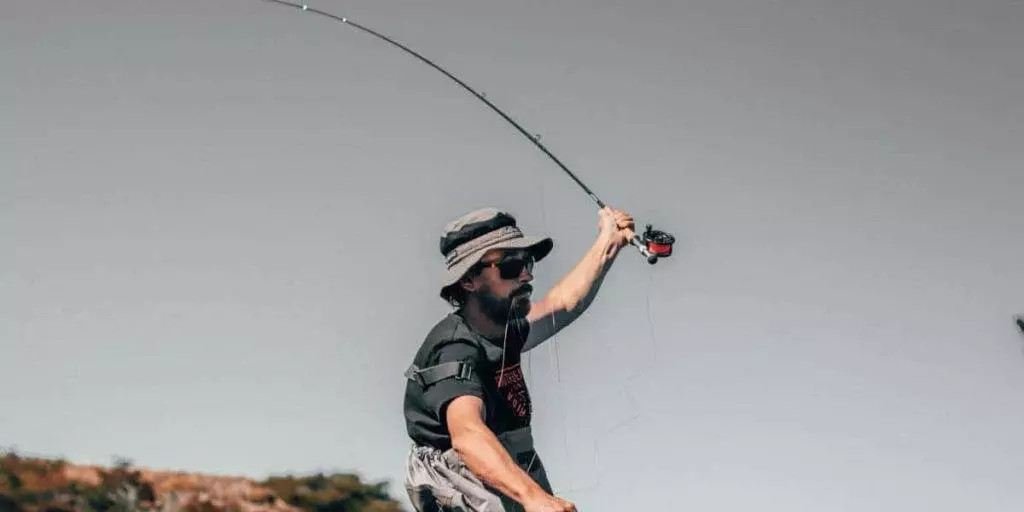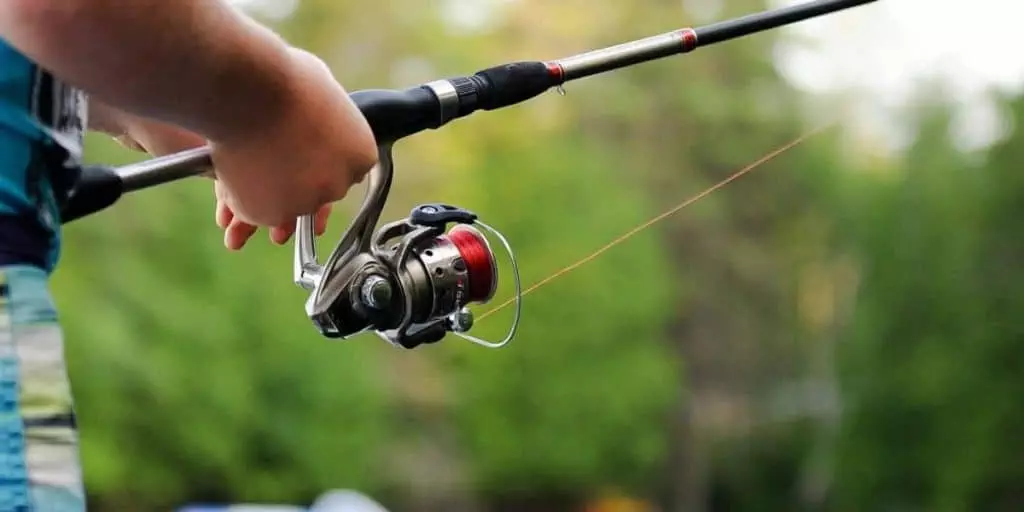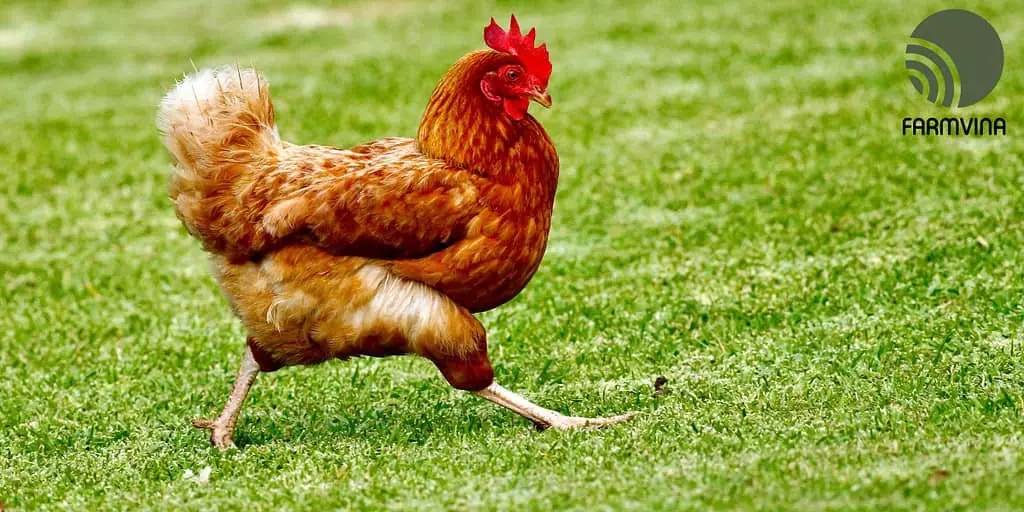 Cast a fishing rod today, yeah?
Cast a fishing rod today, yeah?
Fishing is one of the most popular pastimes throughout the entire world. While many people enjoy this activity, most don’t know that properly casting your rod is the key to catching fish. When your baited line is properly cast, fish will be attracted to your line. As a result, we did all of the research to come up with this easy cast a fishing rod guide.
How To Cast a Fishing Rod? The right way to cast a rod is to locate your target, ensure your entire body is facing the target, load the rod back, and cast straight towards your target. You can employ an Overhead Cast, a Sidearm Cast, and even a Drop cast as you fish.
You will likely need several practice swings before getting the casting process down to a science. You may also be confused as to which way is the correct way to cast a fishing rod.
If you are new to fishing, perhaps picking it up as a new hobby, or if you commonly have problems when casting your rod, then you need to learn the common, proper method for casting a rod. We have put together some tips and tricks to help you get the most out of learning to cast your fishing rod properly, using three techniques.
How to Cast a Fishing Rod (The Right Way)
Many methods or techniques can be used to cast a fishing rod. However, if you want to get a good start and cast your fishing rod the right way, you will want to follow the basic steps.
The Overhead Cast technique, commonly considered as the basic fly-fishing cast method, is the easiest cast with which to start.
Even after you are an advanced angler, you will continue to use this technique, especially when casting in wide-open spaces that require distance casting.
Casting Your Fishing Rod the Right Way
In short, casting your fishing rod the right way can be accomplished in two main steps.
Swing the rod backwards over your head
Quickly accelerate the rod forward
While there are only two main steps and they may seem simple, there are a lot more to those two steps than meets the eye. We’ll break them down in depth so you can be casting your rod the right way in no time.
Before Casting
- Always hold the rod with your dominant hand. You typically want to place the reel foot between your middle and ring finger; but, if it is more comfortable to place the reel foot between other fingers, use the position that is most comfortable to you.
- After baiting your hook, you will need to reel in the lure until you have about 12 to 24 inches of free line from the rod tip.
- The next step depends on whether you are using spinning gear or a bait caster. For spinning gear, you will want to place your finger on the line and keep the bail open. For a bait caster, you will want to keep your thumb on the line and keep the spool free.
Step #1: Swing the Rod Backwards Over Your Head
Swing the rod back over your head until it points behind you. The angle should be compared to 10 o’clock.
Step #2: Quickly Bring the Rod Forward to Cast
- The very instant that you reach the end of your backswing; quickly start bringing the rod forward. This helps load the rod with the weight of the lure and causes it to bend from the force.
- Release the line or take your thumb from the spool; do this when the rod is at an angle of 12:00 o’clock.
- Follow through by swinging your rod all the way to 2:00 o’clock as you complete your cast.
You can use the overhead cast for just about any lure imaginable. It’s best when you are able to cast well beyond the fish. This is because of the large splash that is caused when the lure hits the water, which can spook the fish.
Ensuring Proper Timing
Many casting issues relate to poor timing. Ideally, you want to make sure the line is tight at all times.
If during casting the line is going straight up into the air, then you released your index finger too early.![]()
If after casting, the lure is heading down towards your feet, then you released too late.
One effective way to ensure proper timing of the release is to swing the fishing rod forward and as your casting arm extends, point your index finger straight towards your target. This typically results in the line releasing at just the correct moment.
When gripping the rod, you should use the same strength as you would when giving someone a very firm handshake. This will ensure that you have proper control over the rod throughout the cast.
Other Casting Techniques
The Overhead Cast is simply one casting method. It is often learned first since it is one of the easiest for beginners to learn. Once anglers feel comfortable with this technique, it typically remains one of their favorite techniques to use.
However, with good reason, you may want to learn other casting methods or techniques that take other factors into consideration such as the weather, the depth of the water and your proximity to it, just to name a few.
As you become a more experienced angler, you are certain to add a number of techniques to your tool belt. For now, let’s discuss two other beneficial casting techniques that will be beneficial as you begin to grow as an angler.
Other Helpful and Beneficial Casting Techniques
There are two other main beneficial casting techniques: the sidearm cast and the drop cast. The table below outlines information about them.
Sidearm Cast
- Produces less splash (preferred)
- Requires accuracy and strength (similar to swinging a baseball bat)
- Most effective in windy weather
Drop Cast
- More splashing involved
- Casting straight down into the water
- Great for catching fish deep in the water (and more beginner-friendly)
Breakdown of Sidearm Casts and Drop Casts
The only striking difference between a sidearm and an overhead cast is the angle in which you swing the rod – everything else is the same. A good sidearm cast won’t produce nearly as much splash than the latter, so it tends to be preferred.
Sidearm Casts
The difficult part of learning to cast sidearm is accuracy and strength. Determining where and being able to actually place your lure in the ideal place is challenging when you are first starting out, but the more you practice, you will find that your accuracy will make incremental improvements.
Before you know it, you’ll be able to place your lure in just about any location that you desire.
The sidearm cast is very effective in windy weather. Another benefit of using the Sidearm Cast is that your bait stays close to the water and doesn’t make as big of a splash as it enters the water. A big splash, such as that created by the overhead cast, could spook your fish.
When you think of the sidearm cast, you should think about swinging a baseball bat. The angle is very similar.
Another good mental drill used by many anglers is to imagine that you are holding a paintbrush with paint on it and attempting to fling paint at a target in front of you, as well as a target in the exact opposite direction.
This motion is that you are simulating as you fling the paint off of the brush is exactly the same as the motion with your fly casting, because you need to accelerate and then stop hard to send the paint flying.
Drop Casts
The drop cast technique is used when fishing off a pier or other object high above the water, such as a boat. Your ability to cast is likely limited, having the ability to only fish in the location just beneath you.
With Drop Casting, you are using a rig with a weight attached to a leader below the hook. This allows the bait to suspend to the bottom.
In order to cast straight down, simply free the spool (for a bait caster), or open the bail (for spinning gear) and watch your lure as it drops. To prevent the fish from being spooked though, slow or stop the spool just before the lure hits the water.
Generally, this method has been considered a finesse technique involving fairly lightweights and small plastic baits. This is a myth.
The use of the Drop Casting technique is not limited to light tackle situations such as catching finicky bass. This method will actually catch fish anywhere and in any situation.
Drop Casting is also very effective on deep, suspended fish. If you’ve found a suspended school, position the boat over or near them and drop the bait right on top of them. Wiggle your bait and keep the weight on the bottom as much as possible. If you are patient, you will soon catch an abundance of beautiful bass.

![]() When Drop Casting, you want the point of the hook up so it will stick to the fish better and do not get hung up as much.
When Drop Casting, you want the point of the hook up so it will stick to the fish better and do not get hung up as much.
To make sure the hook is actually pointed upward, run the tag line back through the top of the eye of the hook. Alternatively, you can use a set of pliers to bend the hook point out to increase your catches. You may also want to purchase some drop shot weights, which are readily available.
There is no actual protocol on which baits to use for Drop Casting, but there are some helpful hints that have been successfully adopted by seasoned anglers. For example, some use nose hook baits three inches long or smaller with a number one mosquito hook.
To rig a dropshot, you can find specialized hooks often called finesse hooks or circle hooks.
When choosing weights, always keep in mind your bottom surface, the depth of the water along with the wind conditions; however, 1/8 ounce is standard.
Feel free to experiment with your baits.
The Uni Knot is most commonly employed. Leave a long tag in for the leader although the leader length will vary. The longer the leader typically results in bait being suspended higher off the bottom.
Additional Equipment to Help You Cast
There is a wide variety of accessories and equipment that can make it easier for you to cast your rod. These accessories are not simply for show; they can assist you in honing your skills as you learn to cast your fishing rod properly.
Some equipment as listed is necessary, such a fishing line, although enhanced fishing line can be bought to help you as learn more about casting. Other items can be used simply to aid in either catching more fish or in helping you to identify when fish are interacting with your line.
A List of Additional Equipment to Help You Cast
- Fishing Line
- Fishing Hooks
- Floaters/Bobbers
- Sinkers
- Swivel
- Line Cutter
Where You Can Buy Casting Equipment and How Much it Costs
In the table below, you can get an idea of where casting equipment can be found and the ranges of what the materials can cost at different retailers.
| Fishing Line | Fishing Hooks | Floaters/Bobbers | Sinkers | Swivels | Line Cutters | |
| FishUSA | $3.49 to $199.99 | $1.49 to $18.99 | $0.29 to $14.99 | $1.49 to $64.99 | $0.99 to $24.99 | $4.99 to $14.99 |
| Scheels | $3.09 to $339.99 | $1.29 to $16.99 | $1.79 to $6.99 | $1.49 to $19.99 | $1.19 to $6.99 | $2.99 to $49.99 |
| Cabela’s | $2.19 to $249.99 | $0.88 to $13.99 | $1.19 to $12.99 | $1.27 to $34.99 | $1.99 to $41.99 | $4.69 to $49.99 |
Prices may vary from place to place.
A Closer Look at Equipment to Help You Cast
Fishing Line
Why is fishing line important? Good quality fishing line is widely considered one of the most important factors in fishing today. Lines range from zero to 12-weight.
The goal should be match up whatever line weight you have to the corresponding rod and reel weight. For example, a 7-weight fly line would be ideally matched with a 7-weight rod and reel.
Different from spin fishing or bait casting, it is primarily the weight of the line that makes the rod cast and not the weight of the lure.
Weight-forward fishing line is a line that has all of its weight distributed towards the front of the forward part of the line. This line can be used for all types of casts.
Some line comes in substandard colors such as blue or green. The Power Pro Super Slick Line, for example, is 300 yards long and tremendously strong. The benefit of the color is that the line is easier to see above water but very difficult to see when submerged underwater.
Fishing Hooks
There are literally thousands of various types of hooks available. You will find single, double, circle, and many other categories of hooks and they range in size from number 32 (smallest) to 19/0 (largest).
Beginner anglers should almost always start with single hooks versus being more adventurous with a plethora of different hook types.
Floaters and Bobbers
Floaters/bobbers can play a very important role in helping you to hone in your casting technique. They help in keeping the bait closer to the surface of the water while at the same time alerting you that a fish has an eye on your bait.
The bobber will begin to sink once the fish takes the bait; at this point, you can begin to reel it in. This visual queue helps you to respond quickly preventing any fish from escaping.
Throughout the fishing world, there are not many limits to choice. Bobbers, like other fishing accessories, are sold in a wide range of styles, sizes, and colors. Bobbers most commonly used today are the round, red and white plastic bobbers.
One benefit of these is that they have the ability to limit how deep you can cast. As well, they are very easy to attach to the line. The downside is that they remain in a fixed position.
Traditional bobbers are made of cork with a stick inside allowing you to tie them to your line, making attaching them a little more difficult.
Another option is slip bobbers; these slide up and down the pole. The oval, elongated design serves to ride the waves better. Also, they are advertised to be easier to control in windy conditions. Slip bobbers are more commonly used in deeper water.
Make sure the bobbers you are using are not too large. You want your bobber to float; however, it needs to actually sink once a fish begins to take your bait. Smaller bobbers will tend to more responsive and sensitive to the movement of the fish as they take your bait.
Sinkers and Line Weights
Another accessory to add to your tackle box is a sinker. You should attach one sinker to every line that you cast in order to stabilize your line. Sinkers counteract the lightweight hook as your bait sinks deeper into the water. Always have plenty of extra sinkers on hand, as they lost quite easily.
Traditional sinkers are made of lead, but as companies become for environmentally conscious, you will see that newer ones made of materials such as brass, tungsten, steel, and bismuth can be purchased.
Sinkers also come in different shapes and weights. The key is determining how deep you would like your hook to go into the water.
Small, split shot sinkers are also available. They are very small and round and easily clip on and off your fishing line. Split shots help keep your longer bobbers standing up in the water when they are stacked at the bottom of your bobber. These also help you to hold the bait closer to the desired water depth.

Swivels
Swivels are typically made of metal and is ball or barrel-shaped. Swivels allow the line to untwist during line retrieval so that the line does not tangle, which is a common problem with some baits and lures.
If you install a swivel between your line and bait, the latter can then spin and move freely and not affect your line. The swivel itself has a loop on each end, but you can include a snap to help save time and effort in attaching different lures, baits, and lines.
These snaps can easily break though, especially when catching bigger fish. Fortunately, they are very inexpensive, so you buying well made, higher quality ones. Because swivels come in such a lustrous and bright variety of blues and reds, swivels can be highly effective in attracting fish in low light conditions.
A swivel may also stop a sliding sinker. Some anglers feel that the presence of a swivel has a negative effect, detracting from the effectiveness of the lures. Swivels can also lessen your ability to catch larger fish since they serve as weak points in the line.
Line Cutters
Quite frequently, you will catch a snag in your line, or you may need to set up a new line. This is where a Line Cutter comes in. Fishing lines are designed to be super sturdy; using a cutter, you can cut fishing lines with one snip versus repeated snips when attempting to use regular scissors.
Enhanced style cutters are also on the market, containing options outside of simple cutting ability. Some models done LED lights and the ability to cut through braid, mono, and fluoro flashing lines all in one smooth click.
Tips For Successful Fishing Rod Casting
As a new angler, you are keenly interested in perfecting your casting technique. As with any new endeavor, it is important to learn from the others who are more experienced and adopt the technique and methods that continue to make them successful.
The tips published here are tried and true and have been demonstrated to be effective for the most experienced anglers. Adding these steps to your routine will help you be on your way to becoming an experienced angler in no time.
Tips for Successful Fishing Rod Casting
- Hold the rod and line properly
- Ensure proper alignment of the lure
- Place your feet correctly
- Practice, Practice, Practice
Holding the Rod and Line Properly
A common mistake even by experienced anglers is grabbing the line and holding it up against the rod with your index finger. This will have a negative impact on the accuracy and distance of your line as you cast.
Ensuring Proper Alignment of the Lure
Before you cast your line, ensure you have about 6-8 inches from the rod tip down to the lure. This will give you the most accuracy as you cast your line. The weight of the lure will then give you a nice, efficient cast.
Placing Your Feet Correctly
Don’t overlook the placement of your feet. Ensure your feet and shoulders are square and that your toes are pointed towards your target. Always check that you have room behind you to allow you to cast your rod and line to swing freely without snagging in the bushes.
Practicing to Make Perfect
It is very, very important that you practice casting your rod. Try using your arms only at first. If you cannot do it with your arms and hands only, you will not be able to do it using the rod.
How to Become an Expert at Casting Your Fishing Rod
After learning the basics, you may wonder if you can become an expert at casting a fishing rod. Yes, you can! Using this guide, you have learned the basics and now it’s up to you.
You can become an expert at casting your fishing rod by using the right techniques, practicing and studying the techniques other anglers. You can also learn other tips and trips used by other anglers such as using false casting. In any case, you can take your new skill to the next level in short order if you are determined to put these steps to work.
Main Ways to Become an Expert at Casting Your Fishing Rod
- Use Proven Techniques
- Practice, Practice, Practice!
- Study Other Anglers
- Use False Casting
- Using Proven Techniques
![]() Concentrate on one cast technique at a time. Start with the Overhead Cast and once you understand how to implement it, use it often. Don’t move on to another casting method until you feel comfortable with the Overhead Cast. Afterward, you can tackle even more difficult casting techniques.
Concentrate on one cast technique at a time. Start with the Overhead Cast and once you understand how to implement it, use it often. Don’t move on to another casting method until you feel comfortable with the Overhead Cast. Afterward, you can tackle even more difficult casting techniques.
Practicing
The only way to grow in a skill is to use it and use it often. Practice makes perfect, so continue to practice and you will get better and better at casting your fishing rod. You don’t have to wait until you are out on the water to practice this newly acquired skill.
Life is busy; you may not always have time to go out to the water. So, even when you are not fishing, you can practice in large, open spaces. Aim for places free from trees and bushes. Also, asphalt, concrete, and other paved surfaces will wreak havoc on your line so stay clear of these areas as well.
Place a practice cork, a casting plug, or any small weighted object on the end of your rod and watch your line as your cast improves with practice. For safety purposes, you will not want to use any hooks during your practice sessions.
Studying Other Anglers
Not only is imitation one of the highest forms of flattery; imitating the styles and techniques of others can go a long way in helping you to master your casting technique. Do you have buddies who are already experienced anglers?
Watch them as they cast. Take note of how they stand, where their eyes are looking; take note of the follow-through of their arms and shoulders as they swing. If you don’t have any friends that you can accompany to the water, search on the internet.
There are a number of tutorials and videos on YouTube and right here on this site. Use these to study the techniques others are using to perfect their casting technique.
Using False Casting
False casting, on the other hand, is a technique that is used to extend more line. It can also be used to dry off your fly. Instead of allowing your line to just fall to the water after your forward cast, start a back cast once the line is fully extended in front of you.
Then, loosen the grip on your line at the end of your next forward cast and this will result in extending more line. You should feel the line slipping through your fingers.
Anyone Can Learn to Cast Their Fishing Rod the Right Way
In conclusion, you can learn to cast your fishing rod the right way. Start by using the Overhead cast and once you feel comfortable with that technique, move on to other casts such as the Sidearm Cast and the Drop Cast.
Being able to perform different types of casts due to the varying weather and water conditions will give you the confidence that you have obtained the skills of a mature angler.
Of course, obtaining the perfect cast requires patience, time, and effort. But most of all, it requires practice. Using your new skill repeatedly will only help you achieve the perfect cast in the long run.
Originally posted 2020-02-11 11:03:04.




